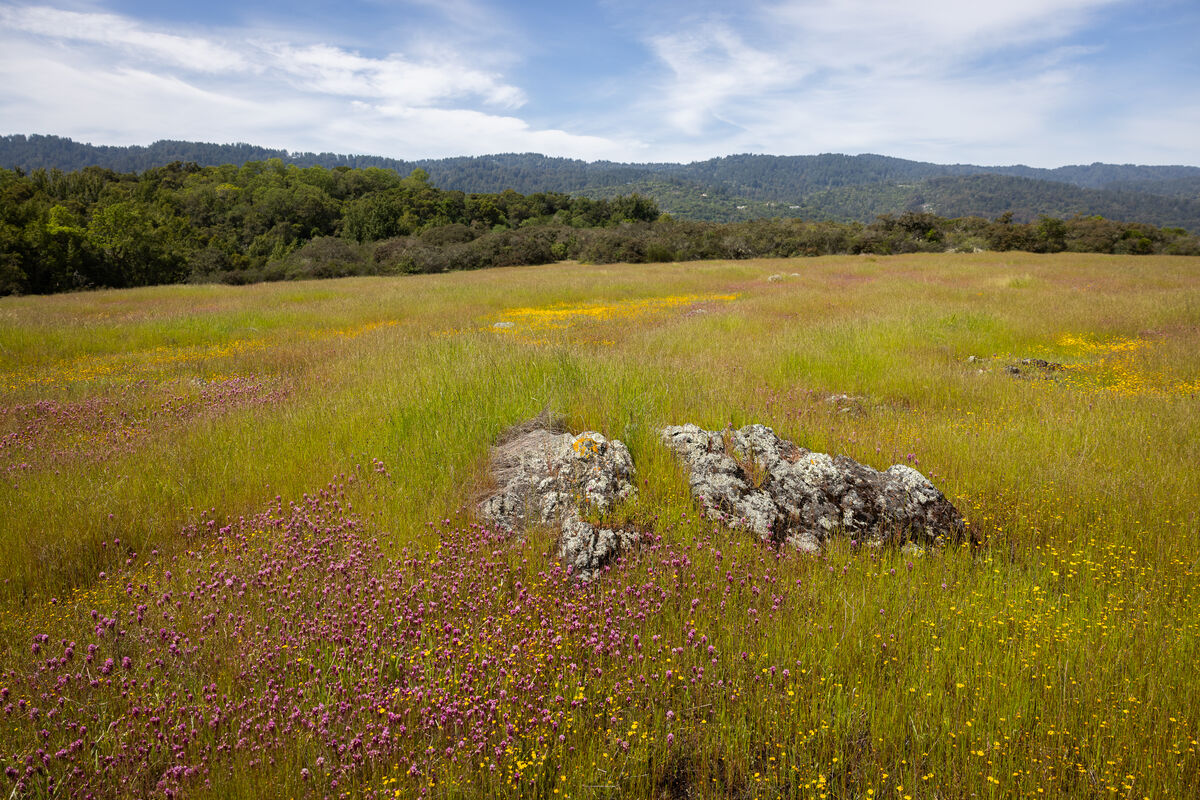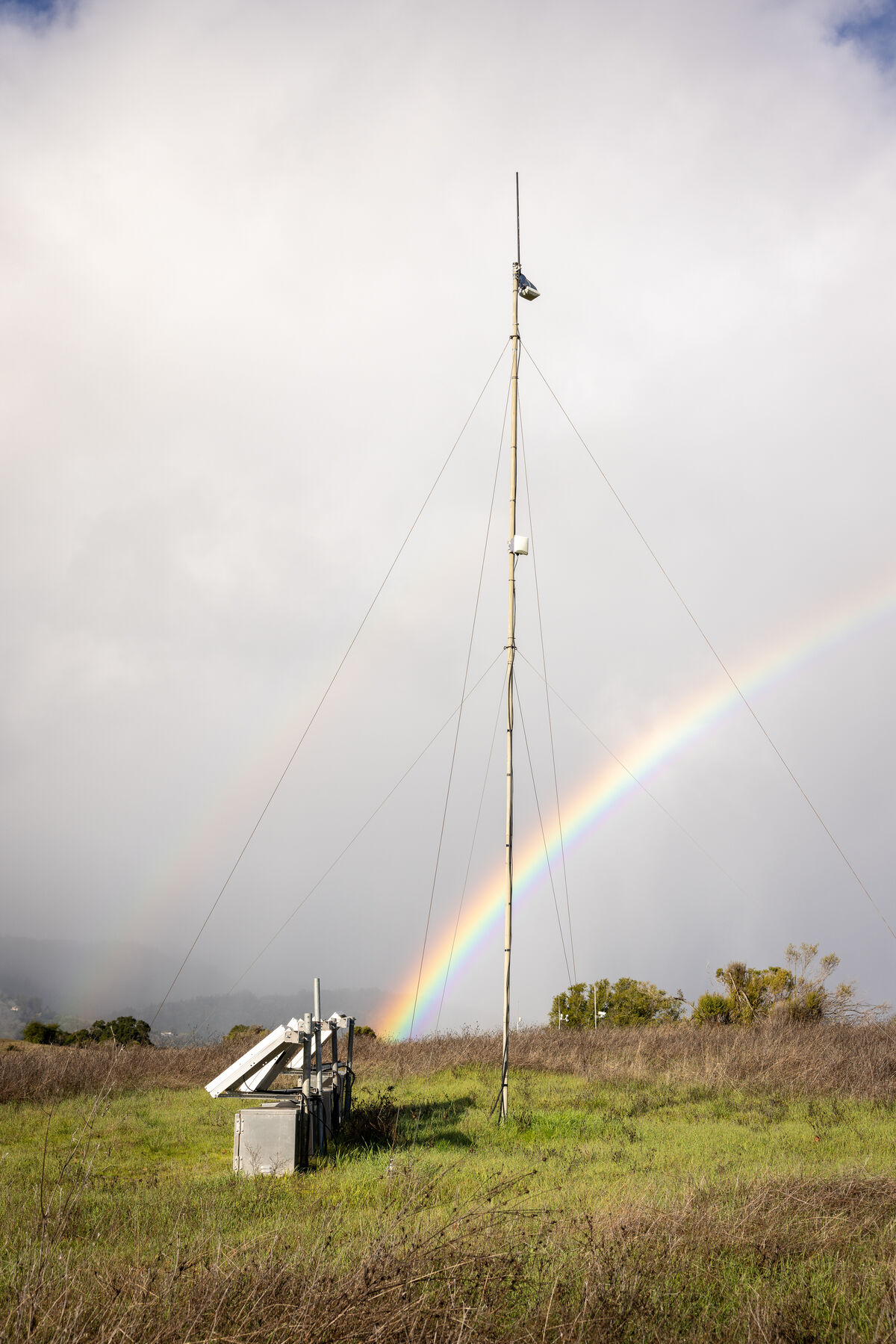April 7, 2025
At Stanford’s Jasper Ridge Biological Preserve ('Ootchamin 'Ooyakma), part of the School of Humanities and Sciences, a hike in February and one in April paint different pictures. The grays of clouds and rain and the browns of mud and leafless trees dominate the winter palette, and it is easy to forget that some things are in their element in the wet season. Fungi arise, moss turns green, and rainbows offer hope for the vernal colors to come. In spring, sunshine illuminates the greens, yellows, and purples of grasses, wildflowers, and leaves that welcome pollinating insects and strutting wild turkeys.
But the story of spring’s bounty begins long before winter’s rains. The nutrient-poor serpentine rock that underlies parts of the preserve formed over millions of years in Earth’s mantle and squeezed up to the surface in patches along the San Andreas Fault. Wildflowers adapted to grow in the harsh serpentine soil, and it helped them resist the advance of invasive European grasses that has replaced many native plants. The native wildflowers are as much a connection to the past as an indicator of a specific point in the natural cycle. The seasons roll on at Jasper Ridge.
Fruiting bodies of fungi emerge from damp soil, ready to spread their spores.
On tree trunks, moss rehydrates and displays a fresh green after months of brown.
Rain provides the moist conditions needed for the underground fungal network to produce visible mushrooms.
Fungi and moss revel in winter’s moisture. These organisms require a wet environment to grow and reproduce.
The twisted treetops of bare valley oaks rise over the grassland toward clearing clouds. A California scrub jay perches atop the middle tree.
The lowland shooting star often grows on serpentine and is a member of the primrose family.
Later in spring, the buds on this coast silk-tassel will burst into bloom and create a tassel-like chain of flowers, mimicking the shrub’s namesake.
The western leatherwood is a shrub native to the Bay Area that is considered rare yet is common at Jasper Ridge.
Raindrops cling to early spring flowers of the lowland shooting star, coast silk-tassel, and western leatherwood plants.
Islands of native wildflowers bloom amid a sea of invasive European grasses. The concentration of serpentine in the soil protects the flowers from being overtaken by the non-native grasses. Above, the gnarled valley oaks keep watch, still without leaves in April.
February versus April: Winter’s bare branches and brown ground give way to spring’s new leaves and grass.
Male wild turkeys flaunt their finery on the ground, and a turkey vulture stretches its wings under a blue sky. Both types of birds are frequently seen at the preserve.
An outcrop of serpentine rock lies atop a field of wildflowers and grasses. Serpentine is low in calcium and high in magnesium, which makes its soil inhospitable for many plant species. This unique chemical makeup stems from the rock’s origin: It came to the surface from deep inside the Earth due to tectonic activity.
Western blue-eyed grass (top) and narrow leaf mule ears present a study in contrasting colors and shapes. Despite its name, blue-eyed grass is not a grass but a perennial herb. Its flowers can be purplish, blue, and even white.
February’s puddles and sprouting grass yield to April’s native wildflowers and leaves on the oak tree.
A double rainbow starts its arc behind a solar-powered Wi-Fi station. Stations throughout the preserve connect wildlife cameras, environmental sensors, and more to support field research.



















